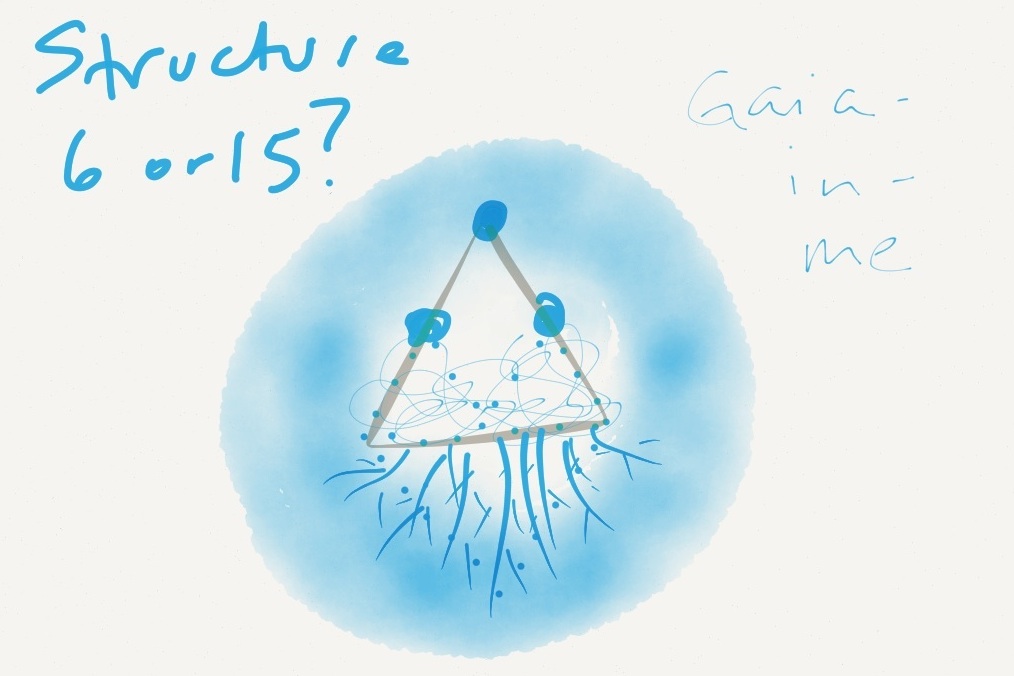Do it all, all at once, as appropriate.
That is what is necessary to engage a whole system.
Otto Scharmer and Katrin Kaufer, in their work Leading from the Emerging Future, describe four levels of social structures that have emerged as humanity grows and develops. The first three are very familiar to us: (1) where power is centralized at the top, (2) where power is decentralized at the top, and (3) where power becomes relational and networked.
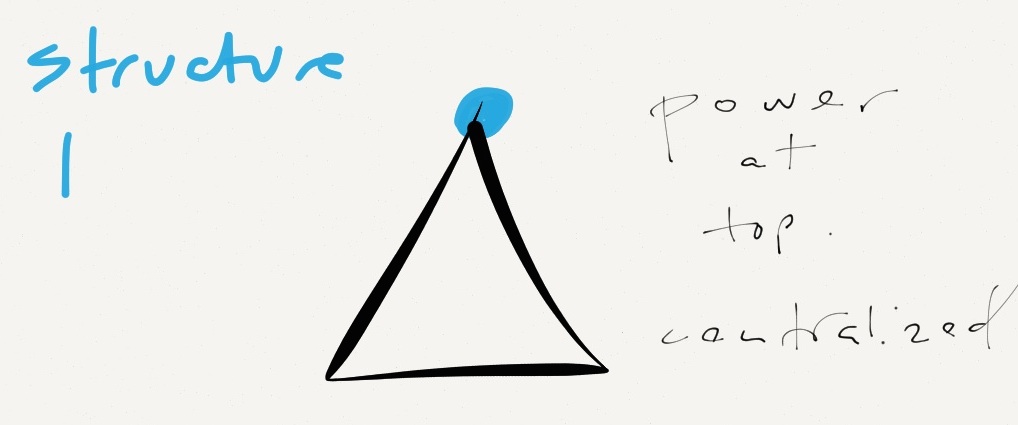
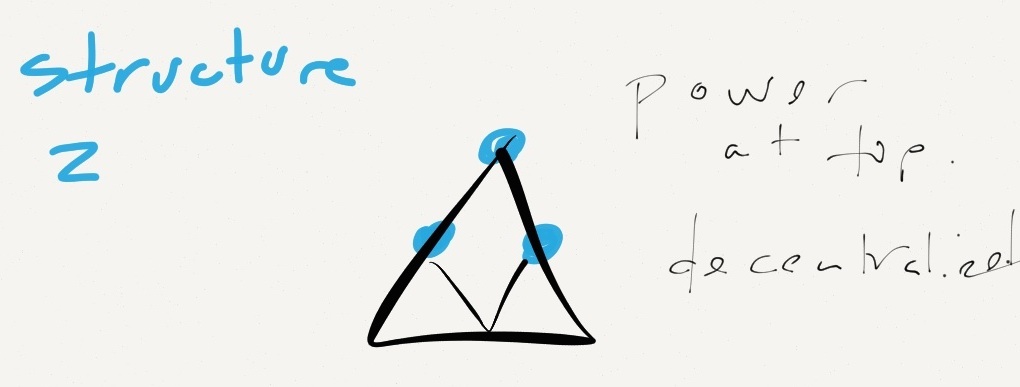
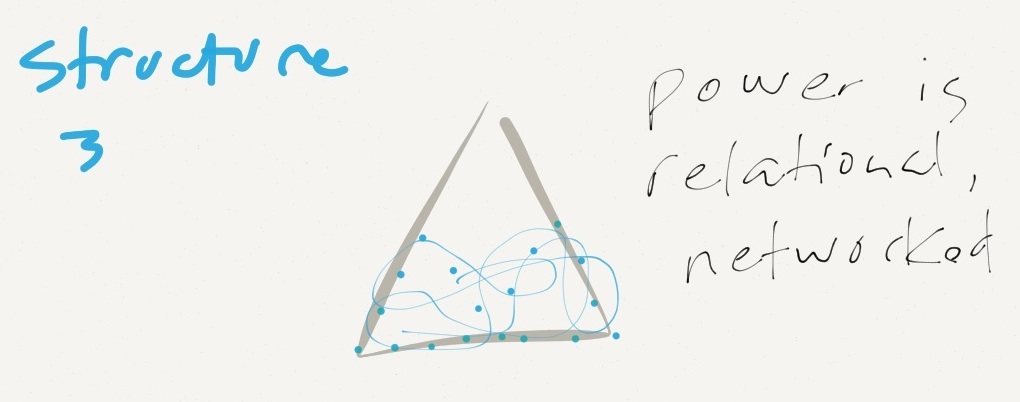
(For readers familiar with the Spiral of values I have previously explored (here’s a primer), Scharmer and Kaufer’s first structure is RED/BLUE, the second BLUE/ORANGE, and the third ORANGE. The fourth, below, is GREEN, with a hint of YELLOW.)
According Scharmer and Kaufer, the fourth structure we are growing into locates power in the social field. They see this clearly, and they see how to create habitats that will allow us to access new knowledge and intelligence that is not accessible with the previous structures.
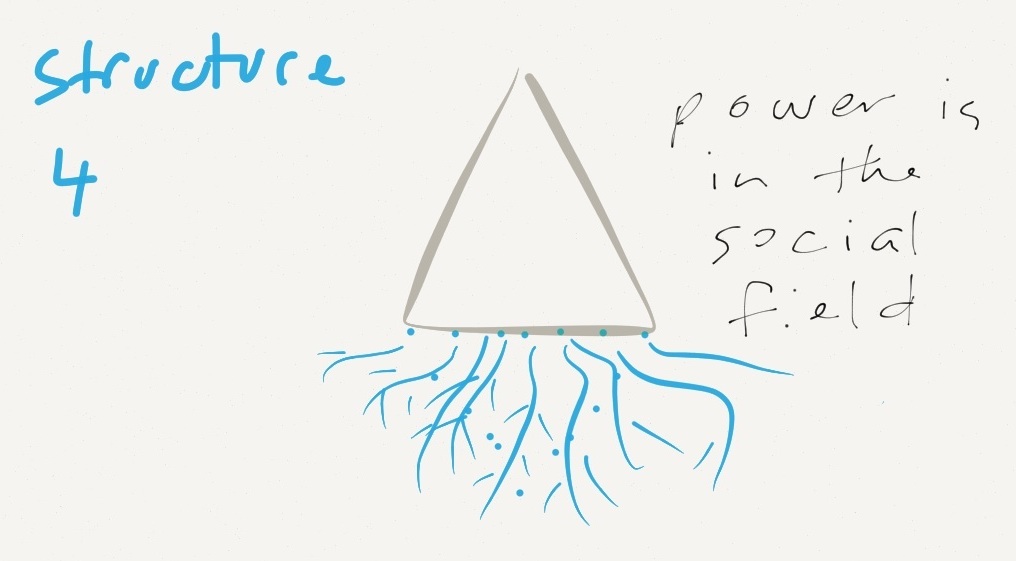
_____
As the structures have evolved, our levels of listening evolve, along with transformations in our levels of awareness and how we coordinate ourselves. It is a journey that is facilitated by infrastructures to help us tap into our creativity, infrastructures to co-initiate, co-sense, co-inspire, to prototype and co-evolve.
The journey they articulate is one where the locus of leadership shifts from ego (me-in-we) to eco (we-in-me). They name the journey we are making from self to Self, from me to we. The most important thing they name are the characteristics of habitats that support and sustain learning. The places we make and shape to nourish and foster the transformation under way matter.
Scharmer and Kaufer stop short of saying something important: all structures have value.
And this leads me to a fifth structure of my own that reflects a leap past the first four to a structure that expects and accepts all structures that Scharmer and Kaufer have identified. We have evolved from structure to structure as they have described. They note that each earlier structure exists in the structures that follow, they leave the reader with a sense that as we advance, we leave the earlier structures behind; they are somehow lesser, no longer appropriate. Their work is incomplete.
My fifth structure, drawing on Spiral Dynamics, is a big leap past structures 1 to 4, because 1+2+3+4=10. It looks like this.
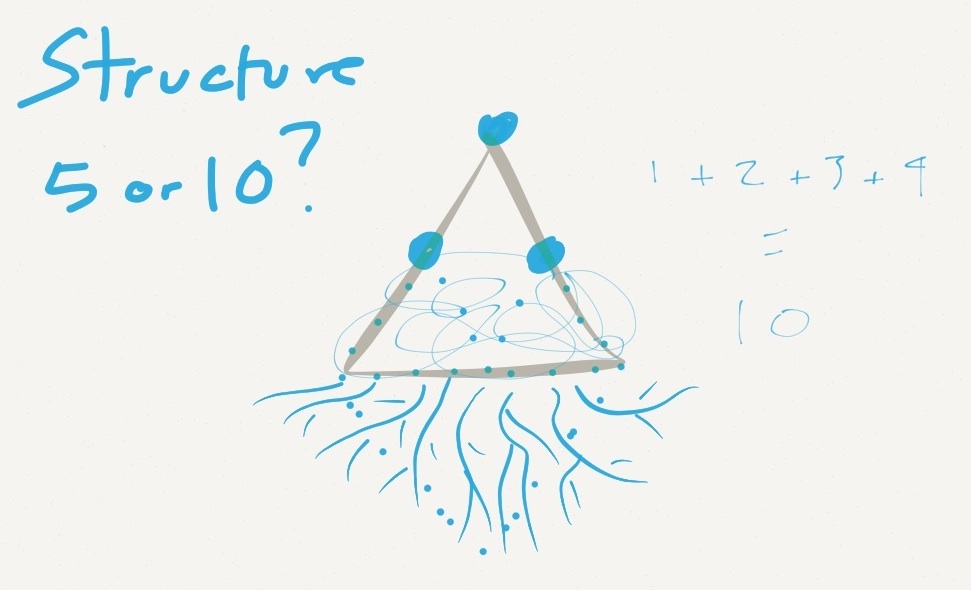
This fifth structure is characterized by a flex and flow of all four of Scharmer and Kaufer’s structures (in Spiral-speak, this is YELLOW). As conditions dictate, all the earlier structures are appropriate. When there is an emergency and fire-fighters are called to action, structure 1 is perfect. When there is no emergency, structure 2 may be appropriate. The fire chief and his personnel retain their hierarchical expectations and organize themselves to make sure the resources are in place for the next emergency; their power is decentralized. Even further behind the scenes, fire department personnel (can) work collaboratively in a network of city builders to make sure that the design of new neighbourhoods meets the needs of citizens and various other needs that need to be met in our city habitats. Their “turf” gets mixed in with that of many other stakeholders in structure 3.
Structure 4 is appropriate when the context allows the players to sit back and contemplate what they are doing and why. It might be a strategic planning session at the fire hall that involves a diverse range of expertise and experience to make wise choices. From structure 5, we see that the time and place varies for each approach, that they all happen, naturally. Where Scharmer and Kaufer characterize structure 4 as eco-in-me, I characterize structure 5 as all-in-me.
Drawing again on Spiral Dynamics, I sense a sixth structure (TURQUOISE), yet again more complex, that encompasses the expanse of systems of systems at work in life. This structure again builds upon the previous structures, taking into account the field in which all systems work, at every scale.
_____
There is a pattern at work in these social structures and within us. What has our attention is expanding. How we organize ourselves is transforming. Here is a summary of these structures. The first 4 belong to Scharmer and Kaufer, the remaining two mine, drawing on the lineage of Spiral Dynamics:
- State-centric – hierarchy and control – traditional awareness
- Free market – markets and competition – ego-system awareness (ego-in-me)
- Social market – networks and negotiation – stakeholder awareness (we-in-me)
- Co-creative – seeing and acting from the whole – eco-system awareness (eco-in-me)
- Co-generative – embodiment of the whole – flexibility/spontaneity awareness (all-in-me)
- Holonic experience of being – expansive planetary connections – global cosmic awareness (Gaia-in-me)
To engage the systems in which we live and work, it is not sufficient to engage only the most recent structure. They all need attention because they all need to be healthy and they all have valuable contributions to make to the system as a whole. We must do it all, all at once, as conditions require. They are all necessary, in the right time and place.
What social structure are you growing into?
______ ______ ______
Need to know a bit more about how all this works? Here are 7 principles that frame the emerging spiral, and 6 conditions for evolutionary expansion.
Some friends and I started a book club to explore Leading from the Emerging Future, Otto Scharmer (Theory U) and Katrin Kaufer’s new book. This is another piece, on Chapter 8. Here’s what came from my exploration of earlier chapters:
- Chapter 1 – Life guard
- Chapter 2 – The antennae of possibility
- Chapter 3 – Prototype social habitats
- Chapter 4 – I’m not a salesperson
- Chapter 5 – Be a vehicle of the future
- Chapter 5 – Offer your Self to your City
- Chapter 6 – Infrastructure for precious communication
- Chapter 7 – Shift the locus of leadership
- Chapter 8 – Meeting vs. learning
_____ _____ _____
